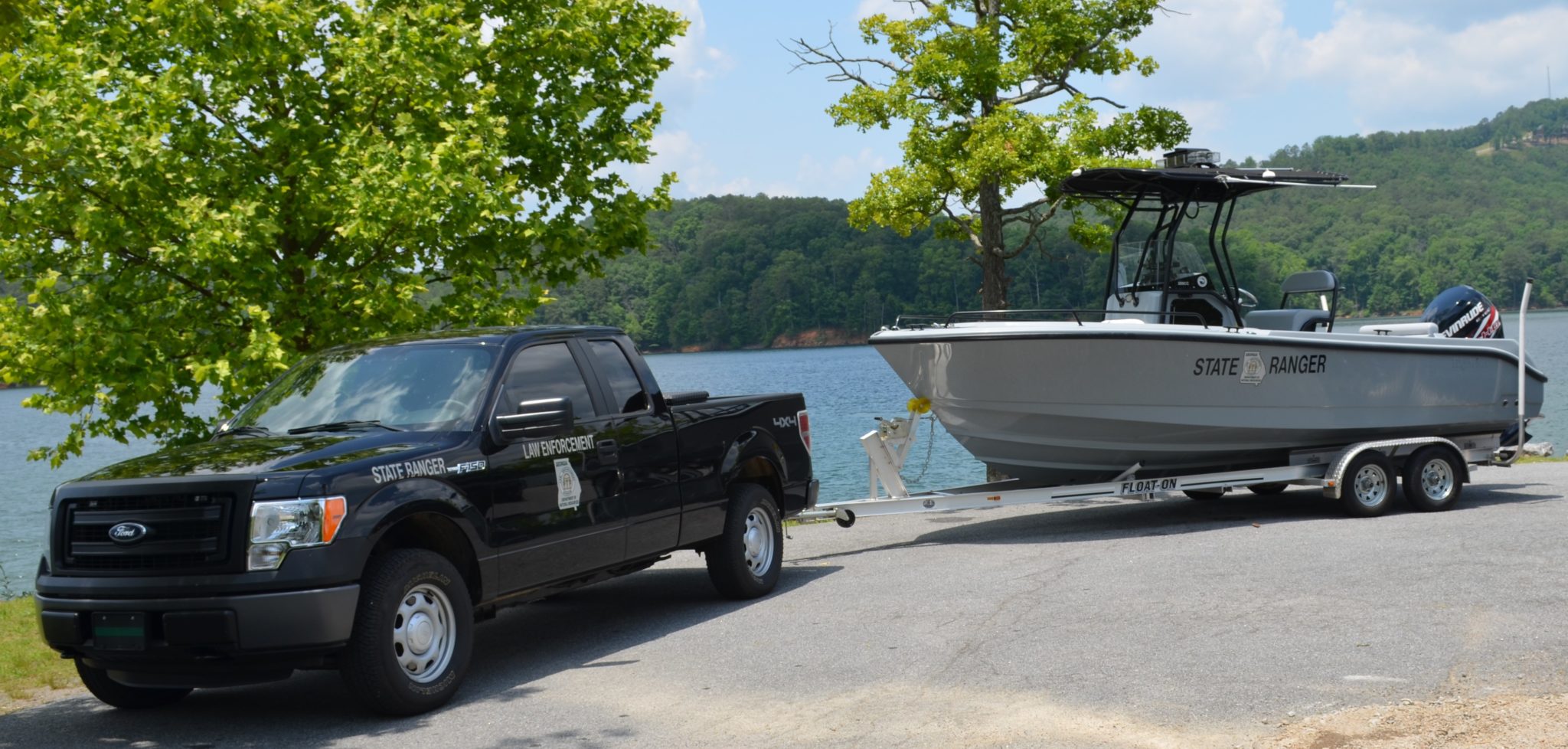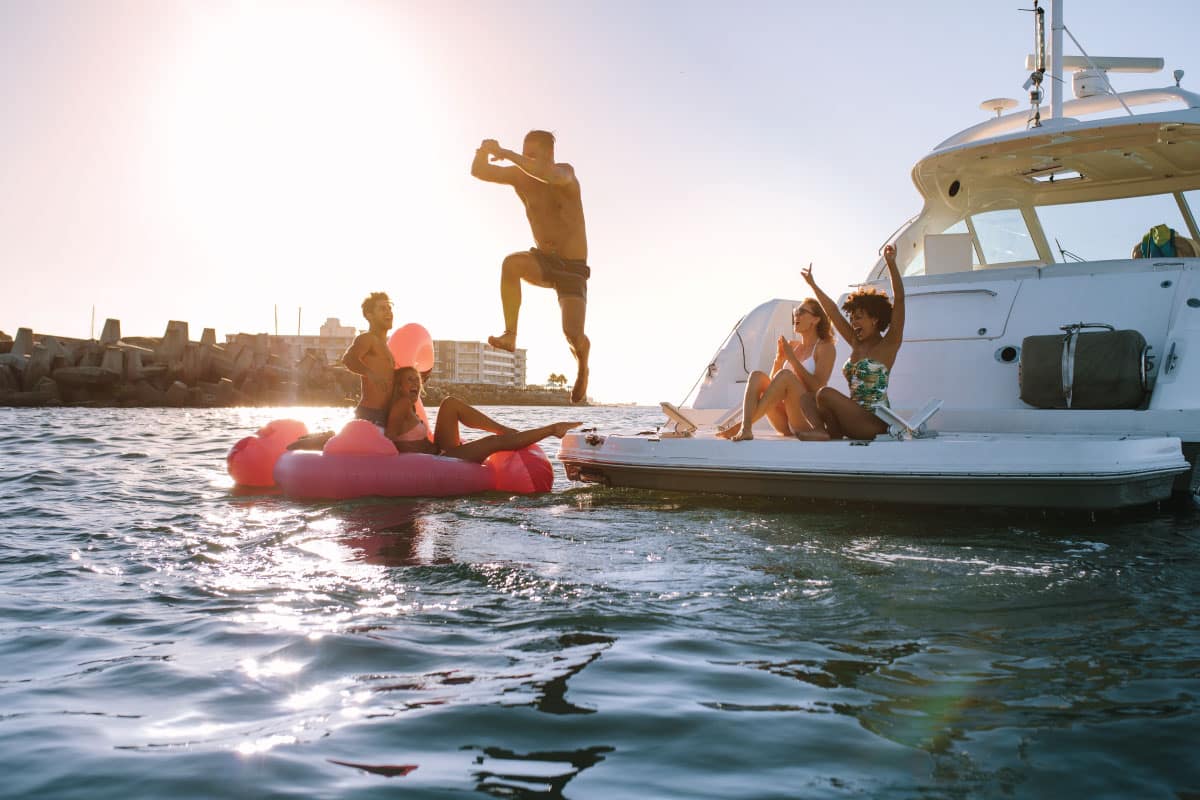When Performing a Self Rescue, When Should You Swim to Shore? Tips and Timing
Performing a self-rescue when boating is an essential skill that can save your life in dangerous situations. Knowing when to swim to shore is crucial.

You should swim to shore if there is immediate danger on the boat, such as fire, sinking, or an explosion. These extreme circumstances require swift action to reach safety.
When the need for a self-rescue arises, self-assessment is key.
Evaluate your ability to swim the required distance, the water conditions, and any obstacles.
If the shore is close and the water is calm, swimming to shore may be a viable option.

Experienced swimmers may find it easier, but even they need to proceed with caution.
Preparation and training in self-rescue techniques can make all the difference.
Knowing how to handle real-life emergencies, such as avoiding rip currents or escaping whitewater rapids, can significantly increase your chances of survival. This knowledge is invaluable for anyone spending time on the water.
Key Takeaways
- Swim to shore if there is immediate danger on the boat.
- Assess your ability and water conditions before deciding.
- Preparation and training in self-rescue are crucial.
Understanding Self-Rescue
Self-rescue techniques are essential for anyone involved in water activities, such as boating or kayaking. They equip individuals with the skills necessary to reach safety in emergency situations.
Concepts of Self-Rescue
Self-rescue involves using one's own abilities and tools to return to safety. It often includes swimming to shore or re-entering a vessel.
In boating, swimming to shore is recommended if the boat is sinking or there is an immediate threat like a fire. Swimmers might practice defensive swimming to protect themselves from obstacles and currents. Floating on the back with feet downstream is a common defensive technique.

Importance of Self-Rescue Skills
Having strong self-rescue skills is crucial for water safety. In many emergencies, the first person to help is oneself. Knowing how and when to act can prevent panic and increase chances of survival.
These techniques build confidence and preparedness. They help individuals stay calm and make better decisions in critical moments. Practicing these skills frequently is important to ensure readiness in real-life scenarios.

Self-Rescue vs. Swiftwater Rescue
Self-rescue and swiftwater rescue are different concepts.
Self-rescue focuses on individual techniques to reach safety, while swiftwater rescue involves trained rescuers assisting victims in moving water.
Swiftwater rescue may use specialized equipment and coordinated efforts. It is typically performed by professional responders. Self-rescue, on the other hand, relies on personal ability and quick thinking.
Understanding the difference helps in choosing the right approach during an emergency. Both skills are valuable, but self-rescue is often the first step before professional help arrives.
Before the Need Arises
Preparation is key for successful self-rescue. Understanding how to prepare, practice, and equip yourself can make a significant difference when you face an emergency on the water.
Preparation and Prevention
Being ready for any emergencies starts with thorough preparation.
Always check weather conditions before heading out. Know the water body you plan to navigate, including currents and potential hazards.
Keep your boat in good condition with regular maintenance. Avoid alcohol and drugs while boating to stay alert.
Life jackets are crucial.
Wear them at all times, as many drownings occur because people weren't wearing life jackets. Take training classes to learn rescue techniques and basic first aid.

Self-Rescue Techniques and Practice
Practicing self-rescue techniques ensures they become second nature in an emergency.
Learn how to reboard your boat after falling overboard.
Practice swimming in different conditions, such as strong currents.
Know when to swim to shore, such as if the boat is sinking or there's a fire.
Defensive swimming (floating on your back, feet downstream) can protect you in rapids. Regular drills with your boating group can also reinforce these techniques.
Equipment and Gear Checklist
Having the right equipment can save lives.
Life jackets should fit well and be in good condition. A whistle attached to the life jacket can signal for help.
Pack a basic first aid kit, including bandages, antiseptics, and necessary medications.
Always carry a throw rope or rescue line.
Ensure communication devices like a waterproof phone or radio are accessible. Keep flares or other signaling devices handy to indicate distress.
Regularly check and replace equipment to ensure everything works properly in an emergency.
Assessing the Situation
Before attempting a self-rescue by swimming to shore, it's crucial to evaluate multiple factors. These include water conditions and the potential risk of hypothermia.
Evaluating Water Conditions
When assessing water conditions, a key element is the current strength.
Strong currents can make swimming to shore dangerous, even for strong swimmers.
It's important to understand if the current could push someone farther away or pose other risks.
Another factor to consider is water temperature.
Cold water can lead to hypothermia quickly, making any rescue attempts risky.
If the water is below 70°F (21°C), hypothermia becomes a significant concern. In such cases, staying with the boat may be safer.
Visibility also plays a role.
Murky water can hide obstacles that pose a risk. Clear water allows better sight, helping to avoid dangers like rocks or debris. Always take a moment to observe the water carefully and make an informed decision.
Executing Self-Rescue
After a capsize, it is crucial to act swiftly and know when to swim for shore. Important steps include staying calm, using eddies and rocks smartly, and staying alert to hazards like strainers and foot entrapment. Here's what you need to know:
Immediate Actions Post-Capsize
When a boat capsizes, stay calm to avoid panic.
Panic can exhaust you and make the situation worse.
Focus on floating face-up if possible, and quickly assess your surroundings. Look for any immediate dangers such as rocks, trees, or man-made obstructions.
Next, locate your boat and paddle.
If the boat is floating close by, hold onto it for buoyancy. Check if you can re-enter the vessel using a self-rescue technique like a kayak flip or paddle float rescue.
Swimming to Safety
Swim to shore only if the boat is no longer safe or reachable.
Swimming should be done if there are immediate dangers on board like fire or sinking conditions.
Use a technique called defensive swimming: lie on your back with feet pointed downstream to protect your body from unseen obstacles.
If you need to swim forward, use breaststroke or sidestroke for controlled and efficient movements.
Keep your eyes on the shore to spot your exit point, ensuring you do not drift into dangerous areas.
Utilizing Eddies and Rocks
Eddies are calm water sections behind obstacles like rocks.
Use these to your advantage when swimming to safety.
Navigate towards an eddy to rest and plan your next move. Eddies can help you avoid strong currents or difficult rapids.
Position yourself behind a rock or vegetation, where water flow is slower.
From there, assess the best route to shore.
Rocks can also serve as temporary anchors to stabilize yourself mid-flow, buying you time to strategize and conserve energy.
Avoiding Common Hazards
Be aware of common hazards that can pose serious risks during a self-rescue.
Strainers, like fallen trees, can trap you underwater, making them very dangerous.
Foot entrapment in rocky areas can immobilize you, especially if you wade through strong currents.
Stay vigilant for boils (upwellings), holes, and submerged trees that can pull you under.
Keeping a clear head and scanning for these hazards will improve your chances of a successful self-rescue. Always avoid swimming under or near these obstructions altogether.
Advanced Self-Rescue Skills
Mastering self-rescue skills can significantly increase your chances of staying safe during a boating or paddling emergency. This section covers eddy turns, peeling out, rolling, and re-entry techniques, which are vital for advanced self-rescue.
Eddy Turns and Peeling Out
Eddy turns involve maneuvering your boat from the main current into an eddy, an area of calm water behind an obstacle.
To perform an eddy turn, you must cross the eddy line—a boundary where the current velocity changes abruptly.
Steps to Perform an Eddy Turn:
- Identify an eddy line.
- Angle the boat towards the eddy.
- Lean slightly downstream.
- Use strong paddle strokes to cross the eddy line.
Peeling out involves leaving the eddy and re-entering the main current.
To do this, position the boat at the edge of the eddy facing upstream. Then, paddle forward and lean downstream to cross the eddy line smoothly back into the current.
Rolling and Re-Entry Techniques
Rolling helps right a capsized boat without leaving it. A common technique is the "Eskimo Roll."
To do an Eskimo Roll, begin by tucking your body close to the boat and using your paddle to sweep outwards. Afterward, snap your hips to roll the boat upright.
Types of Rolls:
- C-to-C Roll: Emphasizes a strong hip snap.
- Sweep Roll: Involves a sweeping paddle motion.
Re-entry techniques focus on getting back into the boat after capsizing. The paddle float rescue is effective:
- Attach a flotation device (paddle float) to one end of the paddle.
- Use the paddle as an outrigger to stabilize the kayak.
- Re-enter by kicking your legs up and pulling your chest onto the boat.
These techniques are critical in challenging situations, enhancing your ability to perform self-rescue.
Recovery and Evacuation
When performing a self-rescue, knowing how to exit the water and manage potential hypothermia and injuries is crucial for safety.
Exiting the Water
Exiting the water efficiently depends on the situation and your proximity to the shore or your boat.
If your boat is nearby and stable, swim towards its stern. Grab the boat firmly and try to pull yourself onboard.
If swimming to shore, assess the safest route to land. Aim for calm water areas and avoid obstacles.
Stay calm, conserve your energy, and swim using steady strokes. Make sure to control your breathing to avoid panic.
Always prioritize your safety over property or equipment. If the boat is sinking or there is any immediate danger, swimming to shore should be your primary goal.
Use flotation devices if available to aid your swim and maintain buoyancy.
Dealing with Hypothermia and Injuries
Hypothermia is a serious concern during water rescues.
Once out of the water, remove wet clothing to prevent further heat loss. Wrap yourself in dry blankets or use an emergency thermal blanket if available.
Monitor for signs of hypothermia such as shivering, confusion, and slurred speech. Seek medical help immediately if hypothermia symptoms appear.
Injuries like cuts, bruises, or broken bones can occur during self-rescue.
Address any injuries promptly by applying pressure to stop bleeding and immobilizing broken limbs with makeshift splints.
Administer first aid and seek professional medical attention as soon as it is safe to do so. Ensure that the rescued individual stays warm and calm to prevent shock.
Training and Resources
Proper training and resources are essential for understanding when to swim to shore during a self-rescue. Learning from experts and utilizing training videos and guides can significantly enhance your skills.
Learning from Experts
Training classes led by experienced kayak instructors offer invaluable insights.
These instructors, some of whom may be world champion kayakers, can provide hands-on experience. They show how to assess the situation, make quick decisions, and execute safe self-rescue techniques.
Hands-on training often includes activities like fire drills and man-overboard exercises.
These simulations prepare individuals for real-life scenarios. Attendees learn not only the physical actions but also gain the confidence needed to react calmly and efficiently.
Utilizing Training Videos and Guides
Training videos and guides are excellent resources for self-paced learning.
Visual materials such as videos allow individuals to see techniques in action. Watching these can clarify complex maneuvers that can be difficult to understand through text alone.
Comprehensive guides often combine written instructions with images.
This combination helps to illustrate proper techniques and common mistakes. These resources are particularly beneficial for those who can’t attend in-person classes or want to reinforce their learning.
Using a mix of these resources ensures a well-rounded approach to mastering self-rescue.
Frequently Asked Questions
Knowing how to act quickly and correctly during a self-rescue situation is critical. Here are some common questions and answers about various self-rescue scenarios.
What should you do if your boat capsizes?
Stay calm and conserve energy. If possible, stay with the boat as it is more visible to rescuers.
Climb onto the hull if you can. Only swim to shore if the boat is in immediate danger, such as sinking or being pulled out to sea.
What should you do if your small open boat capsizes?
Try to right the boat if it is safe to do so.
If you can't, stay near the boat for visibility. Make sure everyone is wearing a life jacket.
Swim to shore only if the situation becomes life-threatening or if the shore is very close and safe to reach.
What should you always do when a person falls overboard?
Immediately throw a flotation device to the person.
Keep your eyes on them to maintain constant visual contact. Turn off the engine to avoid propeller injury, and then maneuver the boat back to the person carefully.
What type of report must be filed if there is an accident while boating?
A boating accident report must be filed if there is a fatality, a serious injury that requires medical treatment, or property damage exceeding a specific amount, usually $2,000.
Reports should be filed with the appropriate state boating authority.
Why should swimming rescues not be attempted when a reaching or throwing rescue is possible?
Swimming rescues put the rescuer at risk of also needing rescue.
Reaching or throwing rescues are safer as they do not bring the rescuer into the same dangerous situation. Use a pole, rope, or flotation device to help the person while staying secure.
What are the swimming strokes recommended for performing a rescue?
The most recommended strokes for rescue swimming are the front crawl and breaststroke. These strokes allow the swimmer to maintain good visibility and balance.
The sidestroke is also useful as it permits carrying an injured or tired person back to safety.
Charlie is Editor-in-Chief of Sea Magazine







